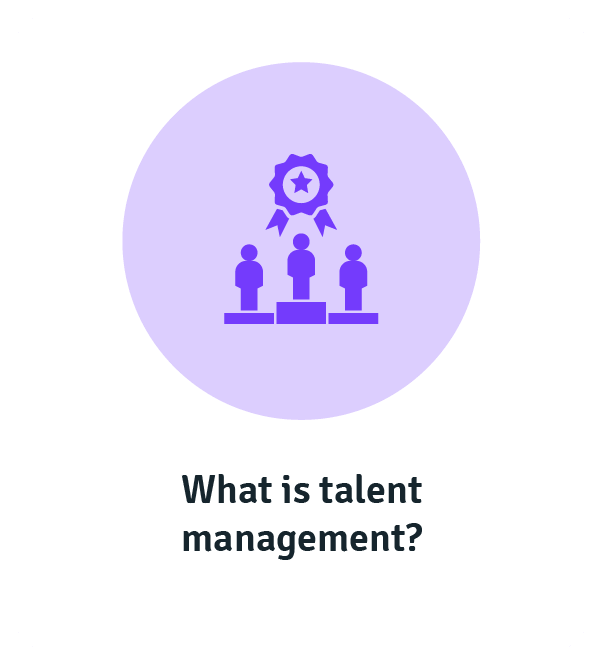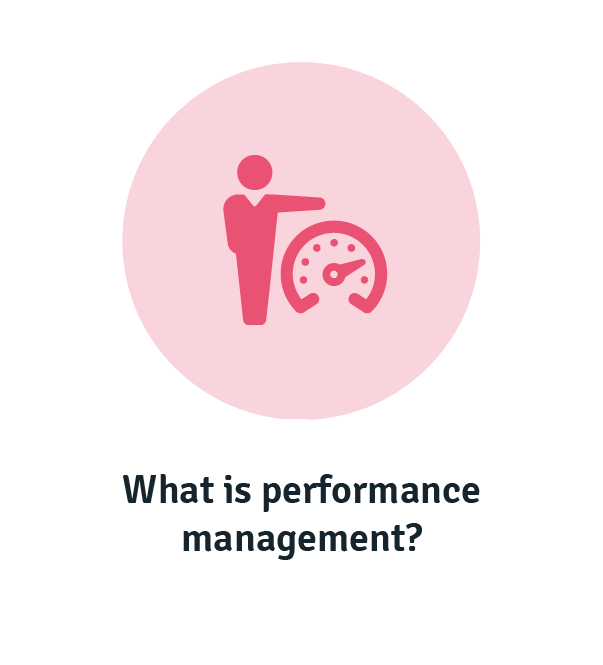Talent Management vs Performance Management: Which One Helps Your Organisation Stay Agile?
Similar names, different games. Talent management and performance management serve two very different masters (ahem, purposes) in the HR realm. The former is about recruiting, retaining and rewarding employees, while the latter is a more niche examination of employee expertise using metrics and feedback.
If one’s a bird’s eye view and the other puts you on the ground, is there one that’s more important than the other? How can your organisation successfully implement either? And which one helps your organisation respond to a volatile workforce and industry changes? We answer all the questions you could have about both people management approaches and more in this article. Let’s dive in.
What is talent management?
Talent management is a function of HR that ensures an organisation has the right supply of talent to achieve its business goals now and in the future. The aim is to ensure that your organisation is future-ready by constantly upskilling and reskilling your current workforce while recruiting the right talent. (And it’s pretty important for your organisation to not be caught without crucial roles when you consider there’s predicted to be 85 million unfilled job positions by 2030.)
The main functions of talent management
It’s also effectively an exercise in resource management by staying on top of talent acquisition, employee engagement, development programs and performance. With that in mind, you’ll find a few pillars under the umbrella of talent management:
- Recruitment. There must be talent in order for talent management to occur; recruitment is therefore the starting point for attracting and converting new talent you want in your organisation. It’s also the point at which HR aligns an organisation’s purpose with an employee’s desire for purpose—i.e. long-term business goals and career aspirations.
- Learning and development. Everything from onboarding to succession to upskilling and reskilling as part of workforce planning. This is the “developing the critical skills your organisation” part of achieving strategic objectives, minimising wasted resources and maximising on employee engagement.
- Performance management. We’ll elaborate in just a few paragraphs, but this is the process through which you measure, improve and recognise employees’ proficiency of aforementioned critical skills.
- Retention. Keeping talent for as long as possible (after all that investment) is essential for long-term productivity, efficiency and employee engagement.
Talent management vs human resources
Essentially, we’re talking anything that encourages strong performance and empowers employees to fortify their career pathways. Side note: talent management is a function of HR, not an alternative or the whole story. There are still other functions critical to business HR will need to oversee, like administration, workforce management, resource management and service delivery (e.g. maintaining intranets or knowledge bases).
Why is talent management important?
If we abide by the four main pillars of talent management, we start with recruitment. On its own, recruitment is not a strong people strategy. Getting people through the door is only half — nay, a quarter of the job. Retaining and developing talent that is unique to your organisation and needs is the name of the game, particularly for developing a competitive edge. And that’s what makes talent management so crucial: The intention to improve business performance.
Availability of resources
…when you need them. Crisis teams, as an example, are rarely pre-planned and as such, are recruited for on an ad hoc basis. An artfully curated and managed talent pipeline will make visible the experience, skills and availability of individuals apt for certain projects. This saves you the time and money it would cost to recruit for that vacancy or take an employee off another project.
Succession planning
Using real time data, you’ll have an understanding of time to value, levels of readiness, and supporting training and development plans. Again, this means there’s less likely to be long periods of vacancy in roles while also demonstrating defined career trajectories for your employees.
Improved employee engagement
And lowered attrition, while we’re at it. Having a lack of resources or even an abundance in the one spot can potentially lead to disengagement, burnout and disillusionment with your organisation’s decision-making. Simply put: Better utilising your employees’ skills makes them more productive, more engaged and more loyal.
Strategic hiring
This is based on capacity planning, which in turn leads to better rates of retention. When new employees are hired on their future potential as much as their current skillsets, you’ll avoid turnover (by having the right people in the right role) and the costs (up to 33% of a role’s salary) and time (42 days on average) associated with it.
What is performance management?
Where talent management concerns itself with the workforce at large, performance management delves deeper into individual or team development. The purpose of the HR function is not to heap praise or rain disapproving fire in annual reviews (the bane of all existence), but to align employee performance goals with organisational needs and to measure the progress being made towards business objectives.
The main functions of performance management
Traditionally speaking, performance management encompasses renumeration, promotions, discipline and development, but it has some more holistic components these days. As it exists at such a granular level, it’s an entirely iterative process — i.e. not just one that looms annually. Performance management should be flexible in order to update objectives in real time and guide day-to-day 360 feedback.
- Setting expectations to ensure employees are efficiently channelling their efforts towards organisational goals. This also ensures work is planned around achievable metrics and that a universal language is created so every employee understands what is equitable.
- Continuously monitoring individual performance to better course correct. Through regular review and feedback, managers can flag areas of weakness and strengths — thereby creating better channels of communication in the process.
- Rating performance — or perhaps, more holistically, giving weight to certain behaviours and thought processes against organisational standards.
- Recognising outstanding performance. It’s a vital function of not just HR but workplace culture that high achievers are acknowledged for their efforts, not least of all because they are making clearly valued and impactful contributions.
- Developing employees’ ability to self-evaluate. While performance management largely involves HR’s intervention, those interventions ultimately equate to employees improving their own work processes, applying new skills on the job, and imparting their own understanding onto peers.
Why is performance management important?
Performance management is vital to not only the day-to-day work of your employees, but their career with your organisation. And you want employees to have as long and frutiful a career as possible with you, because that means the talent you help foster is being reinvested back into your organisation (and not elsewhere). It’s a trickle-down effect, or from-the-ground-up phenomenon, depending on your point of view.
Benefits for employees
Creating a universal language is something we often talk about. We do so because any blurred lines across communication, expectations and standards can result in attrition, poor work ethic, low quality output and general dissension amongst the troops who are reprimanded using unclear framework.
Hence, defined performance management shouldn’t be a cookie cutter approach, but a clarifying experience. It clearly outlines the responsibilities and success criteria of a job role, thereby motivating employees to perform better, increasing their drive for innovation and enhancing their own ability to self-reflect. Of note: A strong performance management system will have both appropriate consequences and recognition for employees.
Advantage for managers
Employees who are self-motivated, hungry for success, and perhaps most importantly, invested in helping their team and organisation succeed—because they understand the impact of their own work—are an asset to their managers. They require less oversight, giving leadership time back for other important tasks, allowing managers to also better discern the low performers from those who are doing well.
On this latter note, learning pathways and other performance management strategies can then be better designed and implemented, given the clearer insight into those who need it. Overall? Managers don’t need to micromanage and can feel more confident in their team’s autonomy.
Impact on organisation
Informed employees = more efficient teams = a high performing organisation. And that’s just the shorthand of it. Performance management outlines organisational goals at a value driven level; by defining the capabilities and job roles that contribute to these, you’re giving meaning to even the smallest of tasks.
The function also facilitates fairer administrative action, considering a framework is pre-determined and universally recognised, smarter resource management, and easier change management thanks to that organisation-wide articulation of business goals and the pathways needed to realise them.

Implementing effective performance management & talent management
As we’ve said a few times already, both performance and talent management should be iterative processes. There are a few reasons for this, but by and large the one to really consider is the project lifecycle.
Many employees will have to divide their time between multiple tasks in any given week, and each of those tasks will have varying timeframes attached. In that way, the traditional annual feedback model isn’t going to cut it, nor is the idea that it’ll be the same questions asked year in and year out.
How to create a talent management strategy
The specs will look different for your organisation, but the steps are largely universal. Even if you have a current talent management process in place, it’s helpful to go back to basics and evaluate just how impactful it is on strategic business objectives.
- Start as higher order as possible by identifying key organisational goals and priorities. Prioritise them how you please, but consider the short and long term impacts. You can’t define the talent you need without understanding exactly what you need them for.
- Spotlight drivers and challenges. You know the direction you’re heading in, so you need to forecast what will help propel your organisation forward and what may throw a spanner in the works. Think: Legislative change, technological developments, lowered workforce supply.
- Undertake a skills gap analysis. This will give you an idea of your starting point so you’ll understand what you need to get to the objectives of Step 1. Consider as well any risks of not addressing those gaps.
- Build HR objectives and priorities from the goals, hurdles and gaps you’ve outlined. Are there people already within your organisation who are ready to fill gaps, or who could be reskilled? Will you need to change, create or remove job roles? What is the ideal timeframe for filling potential risks?
- Track and measure your new HR directives. They say what gets measured gets managed, but it also means any flaws in the process are mitigated and any strengths are optimised. Continuously monitoring the talent management process to provide measurable outcomes will go a long way towards executive buy-in.
Keep in mind
Talent management is as much about ensuring you’ve got the right people with the right skills already within your organisation as it is about recruiting the best people externally. Skills gaps can be addressed through upskilling and reskilling employees as part of a learning and development program. Procuring a learning management system and creating learning pathways can help in this endeavour, plus it has the added benefit of demonstrating faith in your existing employees.
How to build a performance management strategy
You won’t necessarily need to throw out any of the common performance appraisal resources you already use. Many methods of review, such as check ins, face-to-face meetings and salary review, are useful (and if it ain’t broke, don’t fix it). It’s the scale you use to measure the proficiency or excellence of your employees that might need a little refresh, particularly if you’ve considered an employee’s role as secular to organisational success up until now.
The employee performance management process is one that HR will still own, but it’s also important to involve representatives from each area of business.
- Define your organisation’s mission and how it can be supported by performance management. Do you want to create stronger team dynamics? Achieve a larger sales target? Then set the objectives and performance goals that will achieve those.
- Identify and consult key stakeholders, including leaders, managers and employees. Success metrics will likely look different across the board without a game plan. Look to critical capabilities you’ll have outlined in a talent management or workforce plan; consider the levels of proficiency you want for each of those.
- Create team-specific objectives across the organisation and then goals at the individual employee level that help support those defined in Step 1. At this stage, identify how often you want performance towards these goals to be evaluated and through what medium.
- Track progress. This is crucial to monitoring employee workflows and ensuring the effectiveness of metrics and execution. All of this information is needed for managers to review productivity and proficiency, ultimately allowing them to better assist, reward high achievers, or adjust timelines.
Consider the tools you may need to help with performance management. There may be resource management software that helps you book recurring reviews, send out pre-meeting surveys, and also offer 360 feedback (aka peer-to-peer) on projects throughout the year.
Keep in mind
Effective performance management isn’t just about having team members that work well together. Leadership is something that needs to be evaluated too. This is something that will certainly be determined at a higher level, but having markers of success for leadership will benefit your organisation beyond improving your current swathe of talent.
Indoctrinated hallmarks for leadership will give employees something to strive for, creating a more loyal pipeline of talent within your organisation. Coupled with learning pathways, you can even keep control over the level of proficiencies, experience and capabilities you expect your leaders to have.
In conclusion
Talent management and performance management are two similar but overall unique human resource strategies. Neither is more impactful than the other, though each informs the other — and both are essential to your organisation remaining competitive and agile.
Talent management ensures you’re continuously nurturing and building a pipeline of highly skilled employees, both by developing the skills of your existing workforce and strategically hiring new recruits based on forecasting activities. Performance management creates a universal language on proficiency and excellence at all levels of the organisation, which ensures that change can be more easily managed from the ground up. The common ground is that both are built on organisational goals, with the intention of driving value for the business. Creating a plan for both requires a little organisational soul-searching, but leads to higher productivity, efficiency and greater return on investment in the long run.
Related Reads on This Topic

How to Develop a Capability Building Framework
Building capability is a beast, but it can be tamed with a framework for business success.

Surveys Are Your Secret Weapon in Employee Satisfaction
Feedback is integral to effective employee development and satisfaction in the workplace.

The How-To Guide to Post-Training Enablement
Post-training enablement is just important, if not more important than training itself.



